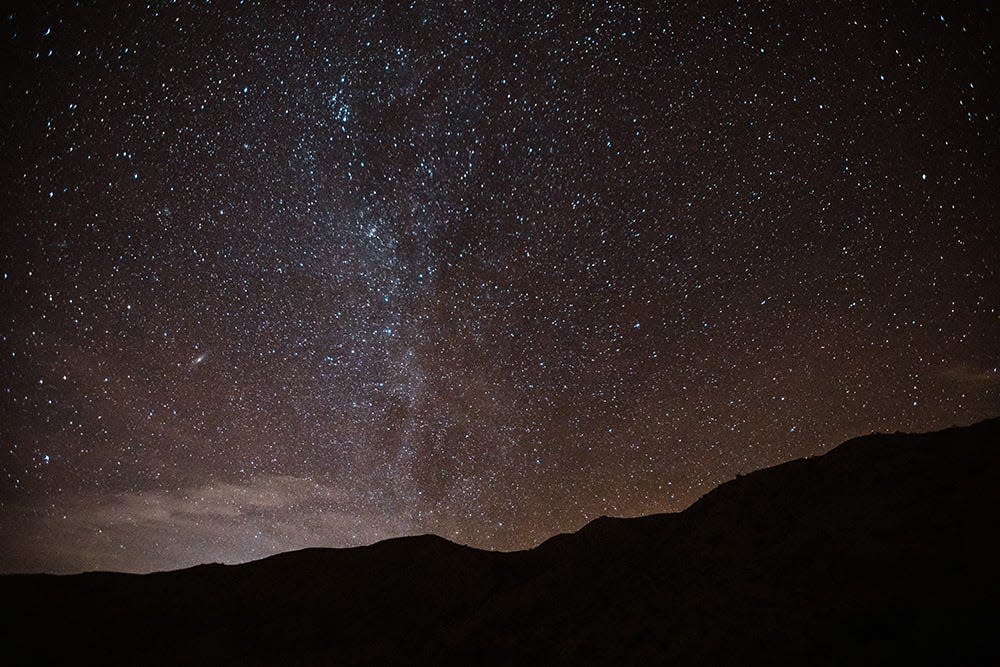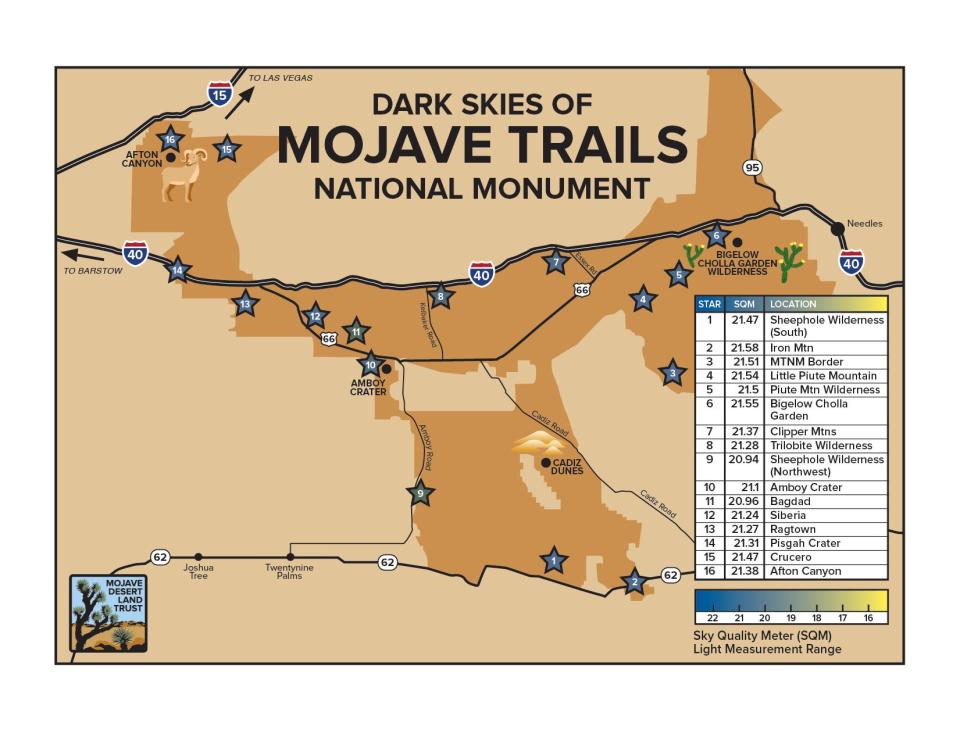New data shows the darkest skies above Mojave Trails National Monument

Mojave Trails National Monument might qualify as an International Dark Sky Sanctuary, according to new data released Tuesday by the Mojave Desert Land Trust.
The 1.6 million acre monument borders Joshua Tree National Park to the south, and partially surrounds the Mojave National Preserve.
Interns with the Mojave Desert Land Trust's Women in Science Discovering Our Mojave (WISDOM) program recently completed a year-long study measuring the sky's brightness at 16 locations in the monument.
Collecting the data was the first step as part of the Bureau of Land Management's efforts to receive Dark Sky Sanctuary status for the monument. A formal application has yet to be submitted to the International Dark Sky Association, which recognizes communities, parks and protected areas with dark skies.
"We appreciate the studies done by our partners in the Mojave Desert Land Trust regarding the potential for a Dark Skies Sanctuary designation in the Mojave Trails National Monument. While it is early in the process, we will continue to work with the MDLT in discussing a potential application to the International Dark Skies Association," the Bureau of Land Management California State Office said in an emailed statement.
In order to qualify for Dark Sky Sanctuary status, brightness measurements routinely must be equal to or higher than 21.5 magnitudes per square arc second. A measurement of 21 indicates a very dark site, and a measurement of 16 indicates a light-polluted site.
The data collected shows that the Mojave Trails National Monument is eligible to apply for International Dark Sky Sanctuary status because the average measurements across almost all locations in the monument are over 21.5.
The darkest spot in the monument was measured at Camp Iron Mountain, and the lightest spot is in the Sheephole Valley Wilderness Area. The eastern half of the monument is generally darker than the western side, which is more easily accessible to visitors and includes Afton Canyon Natural Area, home to the only developed campground in the monument.
But even the Afton Canyon area measured at 21.1 magnitudes per arc second, and "still offers exceptional night sky quality," according to the Mojave Desert Land Trust.

“Thanks to the research of the WISDOM interns, we now have baseline data confirming the premise that Mojave Trails National Monument has some of the darkest skies in Southern California. Establishing the monument as a Dark Sky Sanctuary would mean the protection and conservation of the area’s dark night skies, while also allowing for education about their importance for desert flora and fauna,” said Michael Mora, MDLT director of outreach and public engagement.
In addition to providing star-gazing opportunities for humans, dark skies also impact desert animals — artificial lighting can impact species migration patterns, predator-prey relationships, and circadian rhythms.
According to the International Dark Sky Association, Dark Sky Sanctuaries must be public or private land that is legally protected and either partially or fully accessible to the public. Sanctuaries are typically in very remote locations, like the Cosmic Campground within Gila National Forest in western New Mexico, or Great Barrier Island, which is located 62 miles northeast of Auckland, New Zealand.
The International Dark Sky Association also recognizes Dark Sky Parks and Dark Sky Communities. Locally, Joshua Tree National Park is a Dark Sky Park and Borrego Springs is a Dark Sky Community.
Dark Sky Parks must also be public or private land that is legally protected and at least partially accessible to the public, with a night sky brightness that is routinely equal to or darker than 21.2 magnitudes per square arc second, slightly brighter than the 21.5 threshold required for Dark Sky Sanctuary status.
Dark Sky Communities must be a city, town, municipality or other legally organized community that has implemented a "quality outdoor lighting ordinance, dark sky education and citizen support of dark skies," according to the International Dark Sky Association. There is no brightness requirement for Dark Sky Communities.
The process to receive recognition takes between one and three years.
Erin Rode covers the environment for the Desert Sun. Reach her at erin.rode@desertsun.com or on Twitter at @RodeErin.
This article originally appeared on Palm Springs Desert Sun: Stargazers: Data shows dark skies above Mojave Trails National Monument

